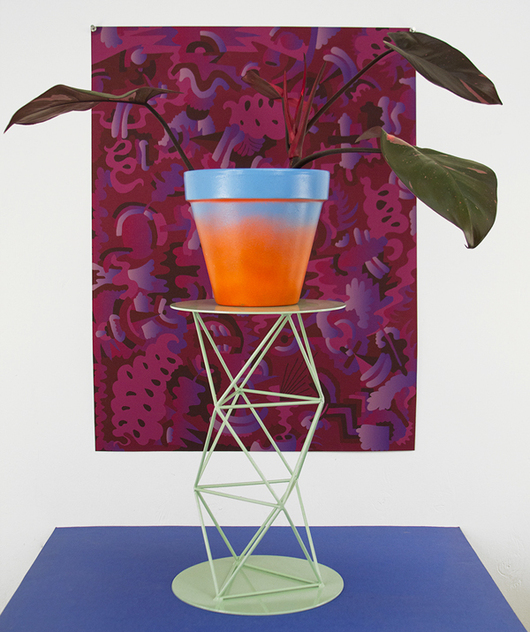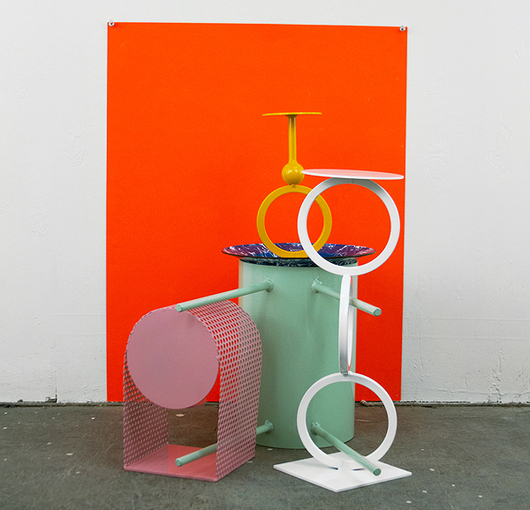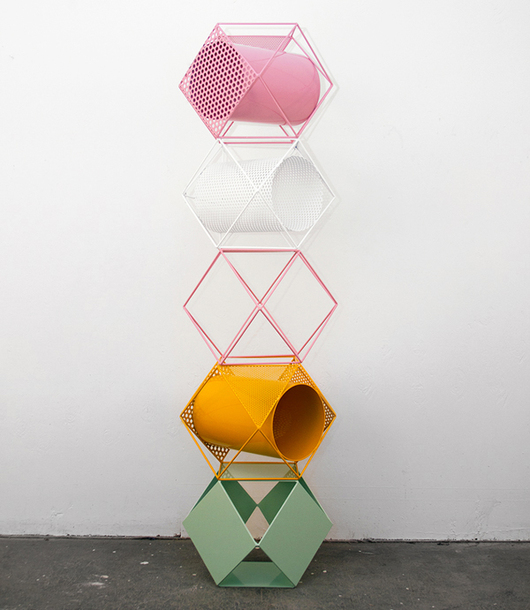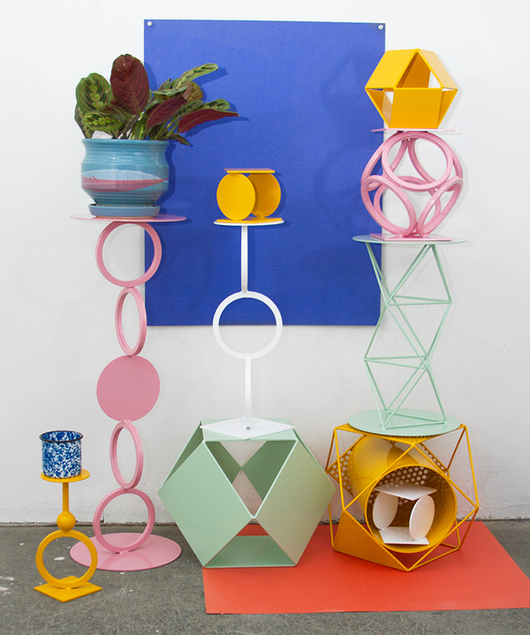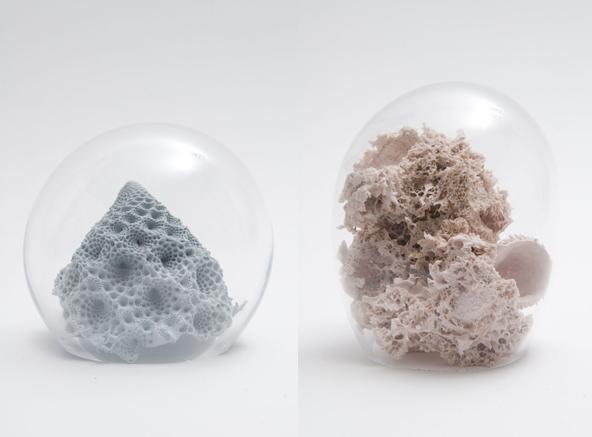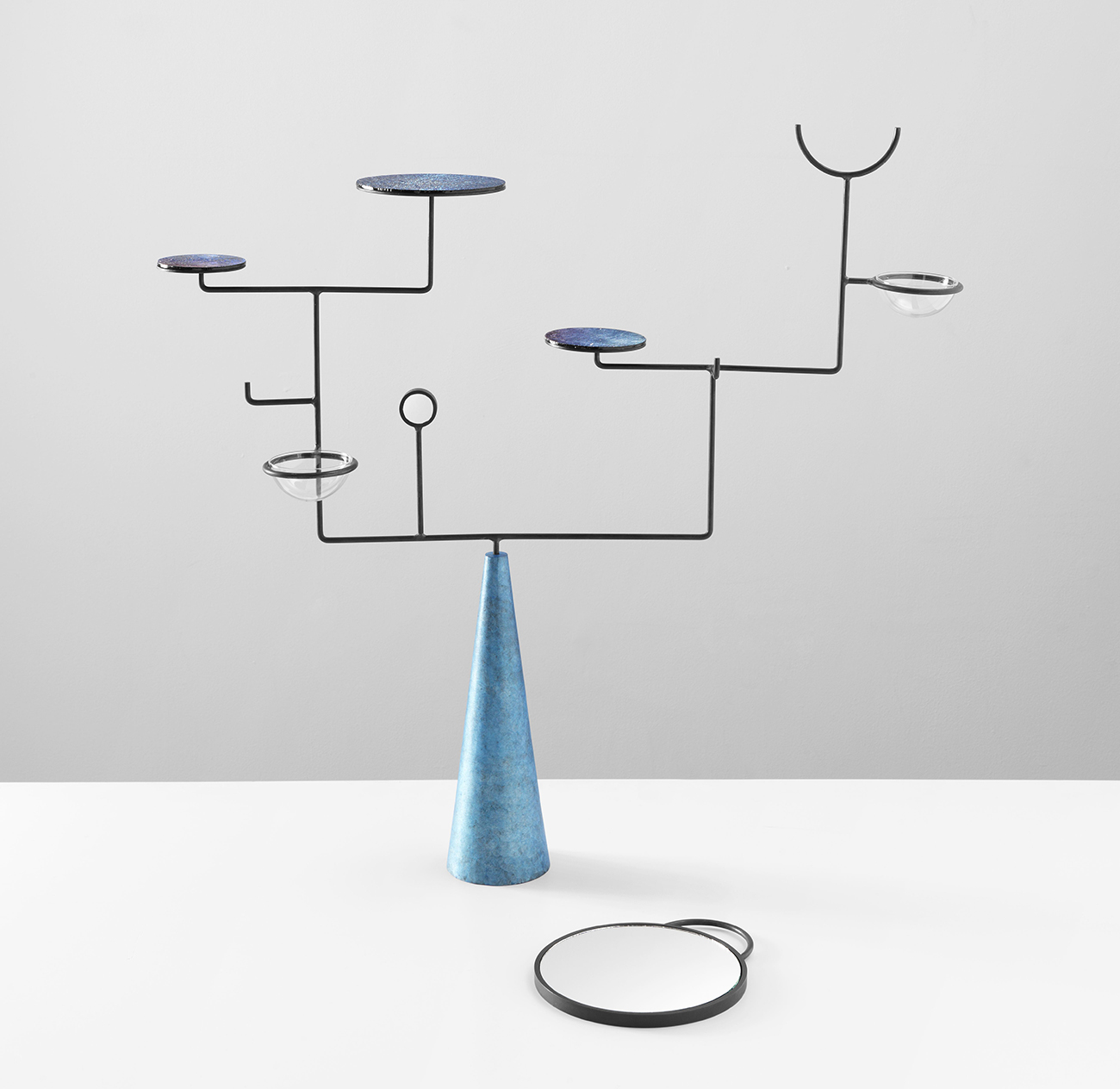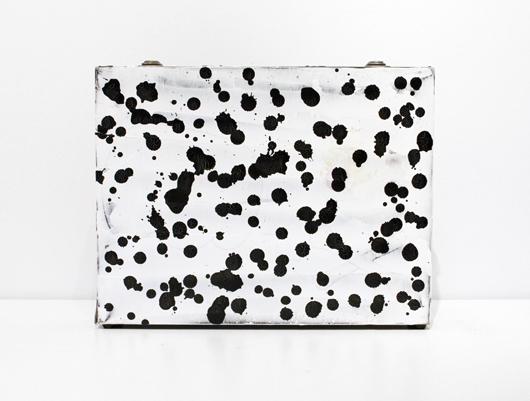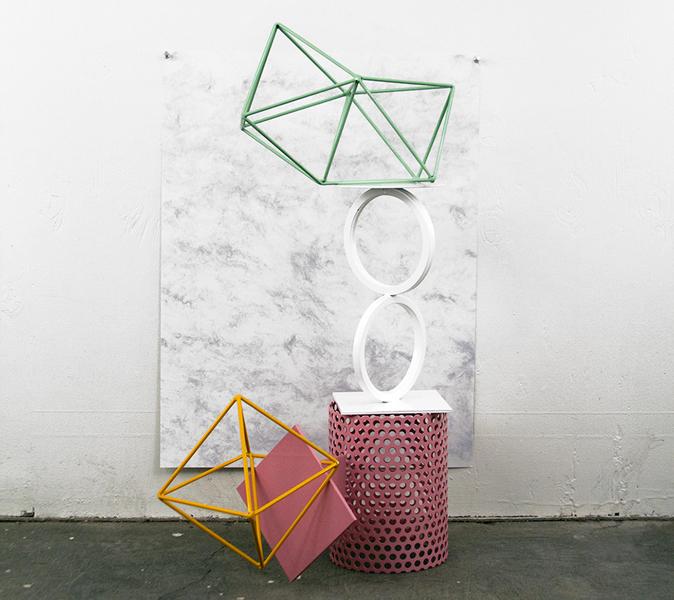
02.12.13
Excerpt: Exhibition
Alley-Oop by Will Bryant and Eric Trine at Poketo
Before the show Alley-Oop opens at L.A.’s Poketo store this coming Saturday, you should take a moment to thoroughly examine the portfolios of its two Portland-based collaborators, illustrator Will Bryant and furniture designer Eric Trine. Because think about it: How easy is it to picture the results of a collaboration spanning the two disciplines? Especially when Bryant’s work is so crazy vibrant — full of squiggles and anthropomorphized hot dogs wearing neon sunglasses — and Trine’s is so very understated, albeit with a lot of cool geometries in the mix. Alley-Oop is like one of those software programs that lets you crudely merge the faces of two people to find out what their child might look like at age 5, though perhaps a better metaphor would be that it’s like what would happen if you pumped two designers full of methamphetamine and locked them in a room together for 48 hours with nothing but some spray paint and a welding gun. Actually, that’s not too far off from how Bryant and Trine describe it themselves. See our interview with the pair below, along with the first preview images of their collaborative work — which hopefully won’t be the last.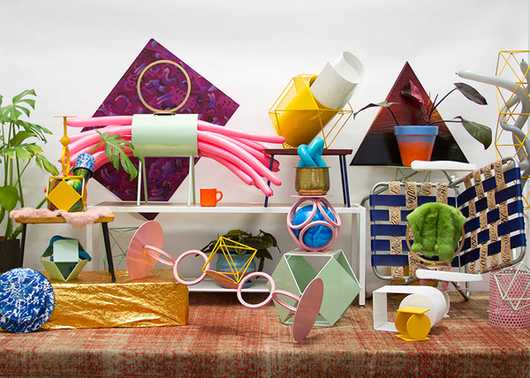
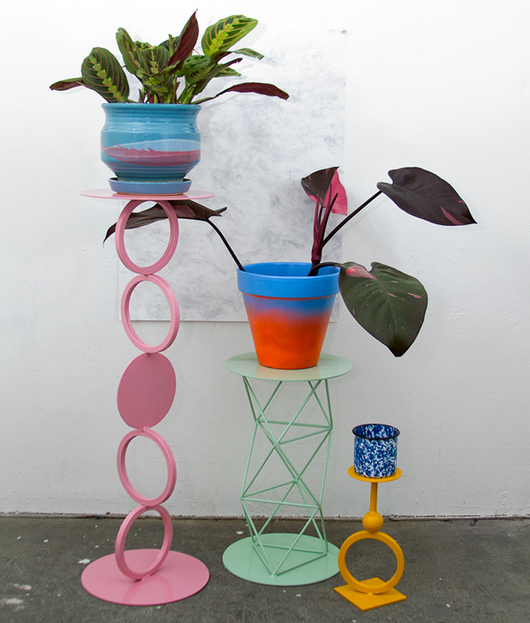 “The assist is as important as the dunk.” Please explain further!
“The assist is as important as the dunk.” Please explain further!
“In basketball, an Alley-Oop is pretty a spectacular move, and often the the player completing the move — the dunk — gets the bulk of the credit. But the player who makes the assist, who essentially sets up the play, is just as crucial as the dunker. With regards to our collaboration, those roles were constantly in flux; we made moves that pushed each other to make more spectacular dunks, tossing the ball up just out of reach, so to speak. Our collaboration was a series of moves, passes, and dunks, calls and responses.”
Can you tell me a bit about how the collab actually took shape? Where did you start and how did you define your roles?
Eric: “The initial steps of the collaboration began organically, as a series of casual conversations. It wasn’t until we secured our exhibition space that our meetings became more formal — and by formal I mean that we actually just agreed to be at the same place at the same time, ha! Some of the objects were forms that I’ve worked with before, but there are tweaks that were made in response to Will’s influence. One big influence is that I haven’t used circles or curves in my work in more than 5 years, and Will can’t draw a straight line to save his life. We spent a lot of evenings in the studio just playing around with materials and setting up different forms. A lot of the objects are metal, and welding lends itself well to that sort of immediacy of construction. Our roles were defined casually, but it depended a lot on how we each were feeling at any given moment. Our aesthetic comfort zones are quite different and our intuitive notions of play didn’t always jibe. I found myself trying to examine why I wasn’t having fun at certain points rather than allowing myself to be in the moment and just have fun.”
Will: “It was about being present and responding to each others’ moves rather than over-thinking everything, which is a symptom of being in grad school.”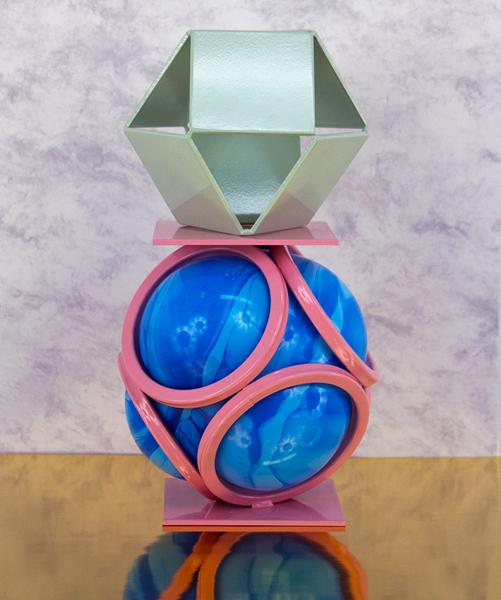
Pick two of the most interesting elements and tell me a bit more about the ideas behind them and how they were made.
Will: “One of my favorite elements we’ve used are party balloons. Eric had done several studies before utilizing marbled balloons, but they were displayed as mysterious forms, not the silly objects they are. We took it into the ridiculous zone with some of the moves we were making during this collaboration. Some of them weren’t documented because they were just too weird. The ones that did work for us had the balance of hard-lined steel and phallic-like forms that made for an absurd spectacle.”
Eric: “I think one of the key elements that was exciting for us was the transformation of raw materials into somewhat-functional art objects, and then reducing them back to simple forms in the way that we set them up and photographed them. I think that dance of construction to deconstruction and back again kept things fresh and allowed us to not get to attached to any one piece.”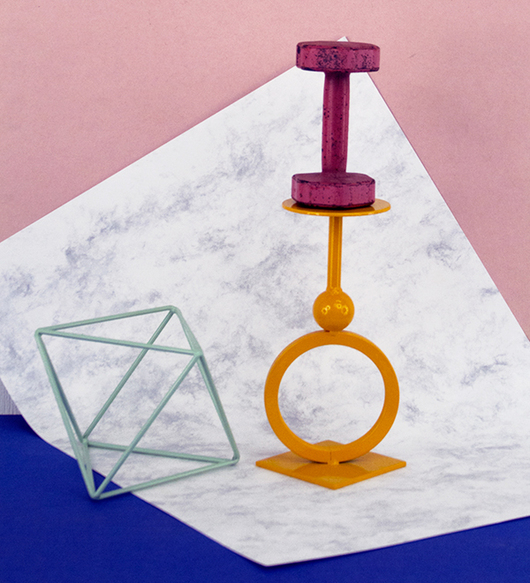
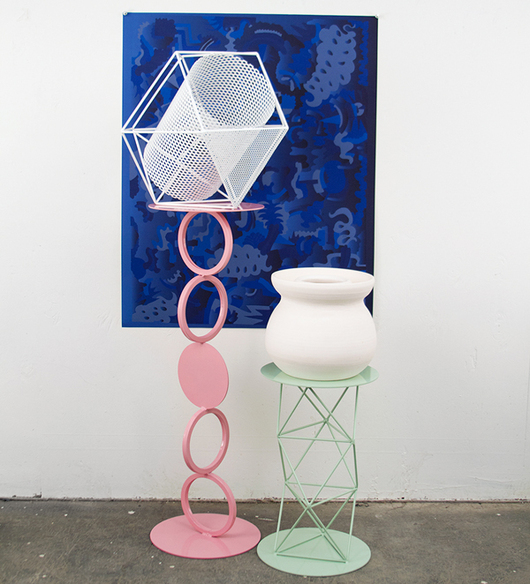 How do each of you feel these objects and installations relate to your personal work? In Eric’s case, for example, obviously some of the geometries are the same, but the pieces are more sculptural and more colorful. Whereas for Will I see connections in the colors and the totems, maybe there’s also a geometric/Memphis/’80s thing as well…
How do each of you feel these objects and installations relate to your personal work? In Eric’s case, for example, obviously some of the geometries are the same, but the pieces are more sculptural and more colorful. Whereas for Will I see connections in the colors and the totems, maybe there’s also a geometric/Memphis/’80s thing as well…
Eric: “These objects are definitely a bit looser than my typical repertoire. I tend to keep my furniture fairly tame and accessible, so this is a bit of a departure from my recent work. I love color, but I typically don’t incorporate that into my functional pieces. With this project, I just gave myself permission to make stuff without thinking about how to sell it, or the price point I want to hit. I went to an arts high school and studied set design, then worked primarily in installation as an undergrad, so in a way, I’ve circled back to my root inclinations with making.”
Will: “For me it all comes back to drawing. Drawing in multiple dimensions — some people call this sculpture. I also see these as experiments in process and authorship. Does it matter who made it or ‘grammed’ it? Maybe. The back and forth and the energy in the room is what gets me excited. Sharing ideas and jumping into each other’s processes is what it’s all about. So how does that relate to my personal work? Well, for a grad critique last term I hired an improv actor to impersonate me and take my place. In same sense it’s all an experiment. What happens when I do this? But not just as a child would touch a stove, there are decisions being made with particular intentions. In this instance, my main intent was to make more than think. For the stand-in performance piece, I wanted to think more than make.”
Can you also tell me how this project may inform your work going forward?
Eric: “The pieces that we created for this project are of a smaller scale than I normally work on, and I’m going to incorporate more of this kind of thing moving forward. My house is filled with interesting art objects and accessories, but I don’t usually make stuff like that — and now I find myself asking, why haven’t I done this before? And I’m definitely going to find more ways to incorporate more color into my work.”
Will: “Anytime I’m around Eric I get a lesson in materials. I just don’t think that way. He does. REALLY well! So being in the metal shop, experimenting with leather dyes, and looking at form and composition with different restraints are all going to inform my future projects. My upcoming thesis exhibition is also centered around collaboration, something I find myself doing quite often.”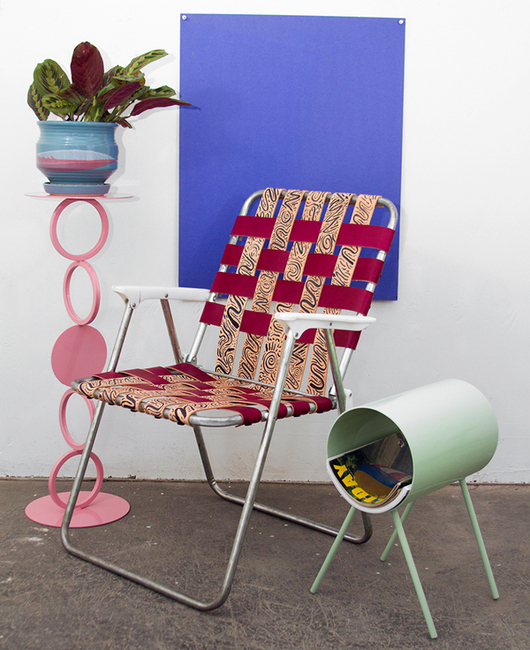 The staging of these pieces are obviously just as important as the physical objects themselves. What were some of your influences and ideas about how to present them?
The staging of these pieces are obviously just as important as the physical objects themselves. What were some of your influences and ideas about how to present them?
Eric: “True. The staging and presentation is just as important as the objects themselves. I started doing this with my furniture pieces about a year ago, as a way of departing from the standard all-white backdrop. I just started pulling found objects and other materials from the studio — plants, posterboard, etc — to create a little scene. Those scenes were more about styling the product, whereas with these situations we were more conscious of creating a formal composition.”
Will: “Here we go again with the play! My illustration work stems from Push Pin Studios, Saul Steinberg, Pee Wee’s Playhouse, ’90s basketball culture, and the Memphis Group. All have definitely been an influence on me aesthetically and thematically. In addition to form, Ettore Sottsass’s 2008 essay for Design Observer, When I Was A Very Small Boy, has been especially influential. He writes about this youthful desire to make for the sake of making. No art directors, no clients, no audience, just the thrill of discovery, where ‘everything we did was entirely absorbed in the act of doing it, in wanting to do it.’ This was something I wanted to do with Eric: mentally step away from the demands of graduate school and make stuff. Not entirely like a child, but somewhat informed, educated, yet uncertain of what we were doing completely. Room for activities. Happy accidents. So with the presentation of these objects I was wanting to have some fun. To perform. To make visual jokes! The academic art world is a pretty serious place. The conversation around craft is pretty boring. Eric and I are both paying a lot of money to question every decision we make; this body of work was an opportunity to let that go.”
“It has always seemed to me that the most natural thing in the world is to draw and make things. I don’t think I have ever made any great difference between drawing a thing, making it, and using it, or even between making things by myself or with others.” –Ettore Sottsass, from “When I was a Very Small Boy” (“Quando ero Piccolissimo”), written in 1973 by Ettore Sottsass and published inTerrazzo, Number 5, Fall 1990. It is published here in a shortened form with the permission of Barbara Radice and Archivio Ettore Sottsass.
